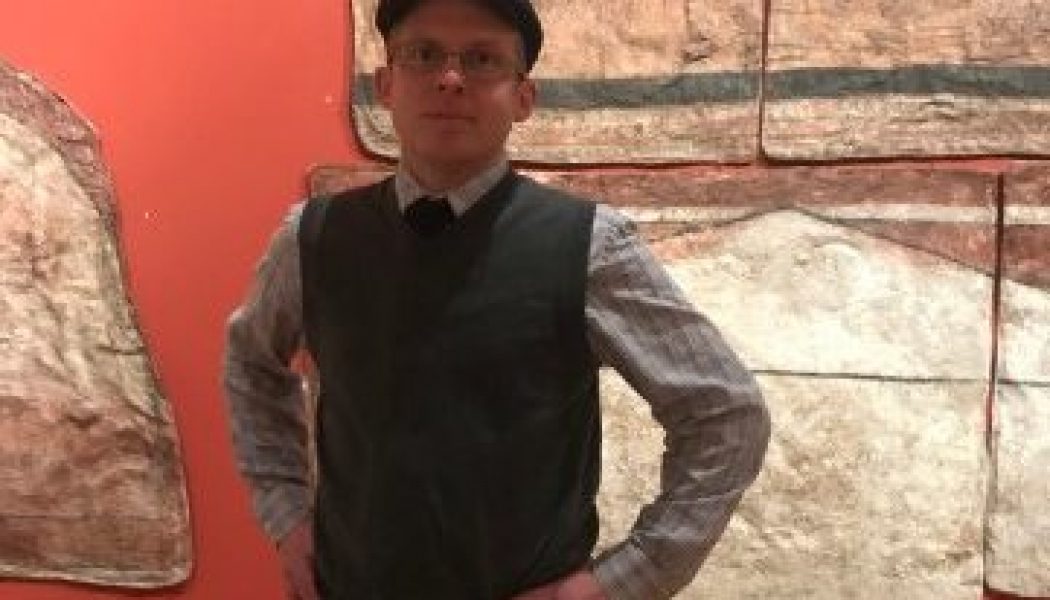My family spent Christmas back in my hometown, Harrisburg, Pennsylvania. Some of us took a pilgrimage of sorts to visit ancient and medieval art in New York City and Yale University’s Art Gallery in New Haven. Connecticut may seem an odd location, but a team from Yale helped to excavate the Roman colony of Dura-Europos in Syria in the 1930s. They discovered the oldest extant church in the world, including frescoes that date back to around the 230s AD.

We know the location of other ancient house churches, but many of them gave way for larger construction after the legalization of the Church. Dura-Europos, however, was abandoned in 256 during a siege from the Persians. The house church, near a tower along the city walls, was back filled to bolster the fortifications. This act preserved the frescoes, and those of the nearby synagogue (with its own impressive paintings), until their discovery in the early 20th century, though they had to be removed for their preservation and eventually transferred off of the original wall material (a providential act given the extensive looting of the site by ISIS).
Earlier in the 200s, the house structure underwent renovation to make it a center for Christian life and worship, not only with a church for Mass (the assembly), a room probably used for catechesis, and a baptistery, where the intact frescoes remained.

The Yale University Art Gallery has preserved five major fragments of these frescoes in a special collection dedicated to the town of Dura-Europos. Here are some selections from photographs I took during the visit (with the help of two of my kids):
-

The Good Shepherd and Adam and Eve -

Healing of the paralytic
-

Woman at the well (Samaritan Woman or Mary at the Annunciation) -

Women in procession (to the tomb or to the marriage feast)
The women in procession are the largest and clearest figures, meant to have been viewed at eye level. The images have experienced deterioration and those painted higher have smaller and less developed figures. All of them, however, point to an encounter with Christ and renewal that would occur in Baptism.
You don’t have to make your own pilgrimage to Yale to learn more about the paintings. A Yale theologian, Michael Peppard, has produced a book describing the church and each of the frescoes in detail: The World’s Oldest Church: Bible, Art, and Ritual at Dura-Europos, Syria (Yale, 2016). Peppard’s book makes some bold claims that have reinterpreted, convincingly, I would add, the subject matter of two of the main frescoes. In the Syrian tradition, anointing constituted a major part of imitation and the image of David and Goliath (not pictured as its very rough and incomplete) pointed to the role of Christ and the initiated as God’s anointed one. It also would have appealed to the town’s soldiers. The Good Shepherd continues a connection to David but also points to the pasturing of the sheep along the still waters as the sheep drink from the stream (a symbol of baptism). The healing of the paralytic shows the power of regeneration as he laid next to the pool in Jerusalem, presented alongside of Peter walking across the water to meet Jesus (not pictured above). These images clearly draw together anointing and the power of Jesus communicated through water.
Peppard, however, also revisits the identity of the woman at the well and the women in procession. By drawing on many other ancient images and the Protoevangelium of St. James (that describes Mary’s youth and another account of the Annunciation) which portray the Annunciation at a well, he makes a strong case that Mary is the woman. The star over her breast/womb indicates the presence of Christ through the overshadowing of the Spirit. That would also explain the meaning of the stars next the structure in the image of the women in procession. It was thought to portray the women coming to Christ’s tomb, but Peppard points out that there are no other examples of the women with torches and, if it were the tomb, the structure remains closed. Rather, he makes an excellent argument to see it as the parable of the wise and foolish virgins, as more feet have been found in the room, and the base of a door. Peppard claims that this door is the one that opens into the wedding feast and the structure is actually a bridal tent, (matching tents in this style and height on the wall of the nearby synagogue). Finally, the torches held by the figure line up with the torches of the parable as the Greek word lampas means torch, not lamp.
-

The parable of the wise and foolish virgins?
The reinterpretation of the image matters greatly in terms of its function in the baptistery. Even though baptism, according to Paul in Romans 6, represents a dying and rising with Christ, Peppard demonstrates that in 3rd century Syria the baptistery acted not as a tomb but a bridal chamber. He envisions those to be anointing and baptized coming into the room with torch in hand and with a jar of oil (just like the figures in the image), such as a jar found elsewhere in town with the name of a neophyte impressed upon it.
This insight may provide the interpretative key to the entire baptistery. The images sought to guide those receiving their initiation into the faith into the realities they experienced. Quoting another scholar, Annabel Wharton, Peppard argues that “the procession to the found and the shepherd and flock” should be seen as “haptic,” not simply to be viewed, with their meaning “embedded in the physicality of the action of which it was a part” (108). Like the wise virgins, those to be initiated had shown wisdom and vigilance in seeking out the Bridegroom and would, at the moment of baptism, enter into union with him.

Though embedded within an art gallery, visiting these images offered a strong connection to the early Church. Though not masterpieces of art, the images clearly represent the faith of those who entered the Church even when still outlawed by the Roman Empire. You can feel the faith of those Christians coming off of the walls in New Haven, Connecticut.









